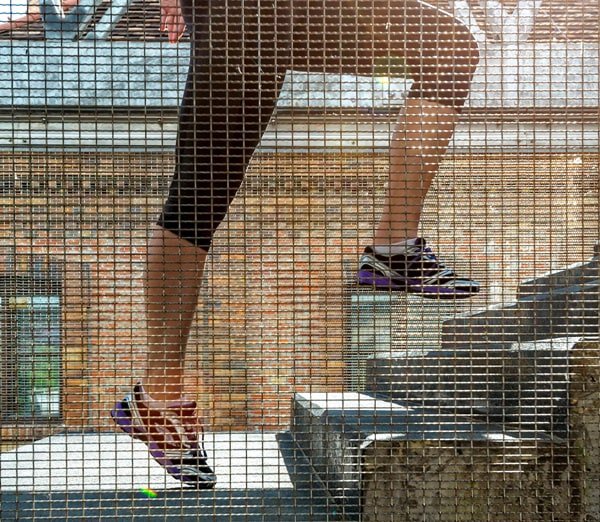Hill Training Increases Performance And Muscle Fitness
SPONSORED
This article originally appeared on Polar.
Incorporating hill training into your running plan will take your running to the next level. Here are four reasons why.
You’ve seen it in the movies.
The hero prepares to face his adversary and speeds through a 2-minute training montage. At the end of the montage, he sprints up the stairs or up a steep hill, turns to face the world and throws his arms in the air – panting and victorious.
When you’re preparing to face your antagonist – say, your first 10K run or a half marathon – you should do the same. Here are four reasons why you should be like your favourite Hollywood underdog and incorporate hill running into your training plan.
1. Hill training improves general endurance and speed
Adding variety to your training is always good. Hill training forces your muscles to work differently and disrupts your body’s homeostasis.
Hill repeats add strength and intensity to your training. Also, maximising oxygen uptake is easier up a hill than on an even-levelled track.
When you add hill training to your running schedule, keep in mind that introducing training changes will be hard on the muscles. You should take time to recover, even when your heart rate remains in the general endurance area.
2. Running on uneven terrain makes muscles develop more naturally
It is also a good idea to do some hill training on rough terrain, for natural hill variety.
Running on roads and level surfaces places a monotonous strain on your legs and your musculoskeletal system will not develop as optimally as on uneven terrain.
Uneven terrains are gentler on the feet than long stretches of uniform terrain.
3. Hill training is the perfect opportunity to improve running-specific muscle strength
There are various ways to improve muscle strength. One of the most important ingredients of long-term progress is varying the stimulation.
Hill training in particular is a great way to increase strength in the muscles you need for running. You’re working against gravity, forcing your muscles to work differently from what they’re used to.
But you’re still running.
When you improve strength through hill work, keep repeats rather short to avoid the high levels of lactic acid. Try doing 20–50 metre repeats, alternating between hard and moderate repeats.
Remember: a relaxed running technique leads to better results.\
4. Hill training improves your running efficiency
If you learn to run hard comfortably uphill, your running economy on an even-levelled track will obviously improve greatly.
Also, if you know that your event track will have hilly sections, during the race is not the time to start preparing for them. You should prepare the body, the muscles and the mind by training in racetrack conditions before you put your race bib on.
If you incorporate hill training to your training, you’ll breeze over the hills that come your way.
QUICK TIPS FOR HILL TRAINING
Remember to pay attention to a good, relaxed running technique during hill training.
Start with small doses since training changes will easily overexert your muscles.
Unlike our hero in the movies, don’t stop running when you reach the top. By jogging downhill between repeats, you will keep your muscles active and boost recovery.
This article originally appeared on Polar.
READ MORE ON: heart-rate-monitor polar






